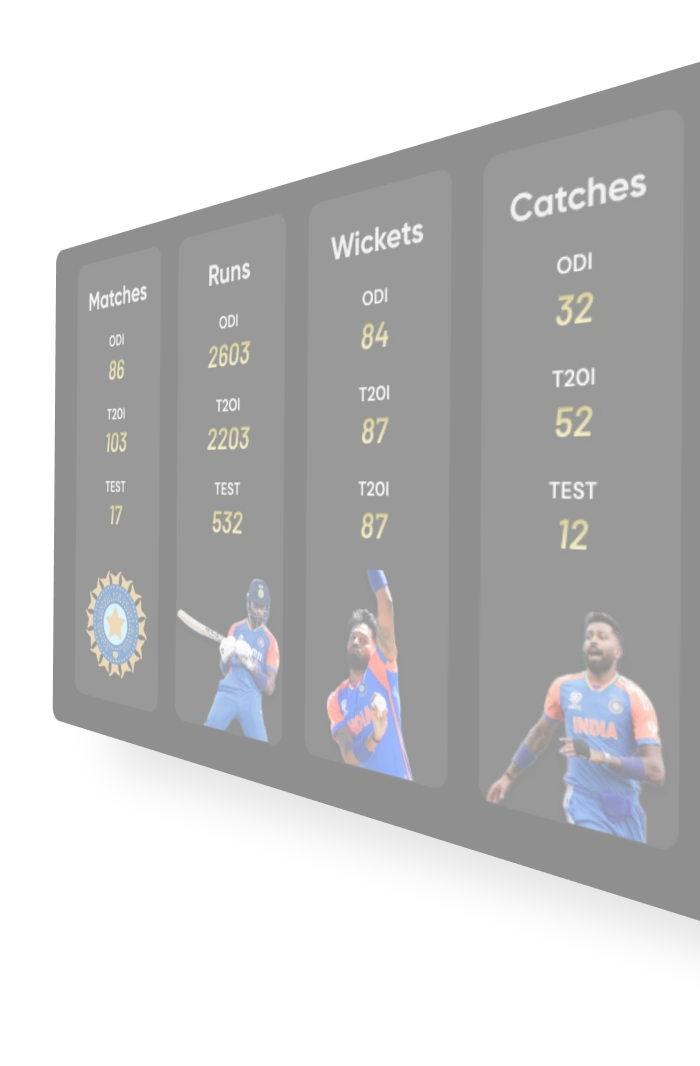15 Laws of Cricket (Basic Rules): Explained with Images

Table Of Contents
Spirit of Cricket vs Rules of Cricket
The debate between the spirit of cricket and the rules of cricket is very old. There are arguments about whether certain rules of cricket should be applied given they can sometimes be against the spirit of the game.
In 2023, a closely contested Ashes series took place in England. England was batting at the Lord’s Stadium when Australian wicket-keeper, Alex Carey stumped out Jonny Bairstow. However, this wasn’t an ordinary stumping as Bairstow, facing the last delivery of an over from Cameron Green, left the ball and went to the middle of the pitch to chat to his non-striker partner. Carey who thought the ball was in play made an underarm throw at the stumps inflicting the dismissal. The moment turned out to be a heated moment in the series and the spirit vs law of the game debate once again began.
In the same year during the ODI World Cup, Shakib al Hasan as the Bangladeshi skipper appealed for Angelo Mathews to be dismissed as he did not reach the crease in the allowed time. This was the first instance of a timed-out dismissal in International cricket. Discussions arose whether Shakib’s decision was in the spirit of cricket or not even though it was well within the rules of the game.
Basic Cricket Rules and Regulations
So how many laws or rules of cricket are there? Well, the former governing body of the sport, MCC (Marylebone Cricket Club) states that there are 42 laws of the game. These 42 laws are responsible for maintaining the sanctity of cricket. These laws cover different game parameters, ranging from the players to how players should conduct themselves on the field.
There are laws for every mode of dismissal, including common dismissals like bowled and caught behind. These laws also include dismissals that are rarely seen, like hitting the ball twice or being timed out. While there are 42 cricket laws, we will explain the most common 15 rules of cricket.
1. Dead Ball
The dead ball was one of the controversial laws that was highly discussed during the Ashes in 2023. The dead ball comes under the purview of Law 20 of the MCC rulebook. The ball becomes dead when the following conditions are met:
The ball gets settled in the hands of the wicketkeeper or the bowler.
The ball reaches the boundary.
The batter gets dismissed.
The ball becomes trapped between the bat and the clothing of the batter.
The ball lodges into the clothing of the batter or the umpire.
The ball hits the protective helmet worn by a fielder.
2. No Ball
The no-ball is governed under Law 21 of the MCC rulebook. In modern-day cricket, a no-ball is signaled by a siren rather than by an umpire. A no-ball could be called for multiple reasons given below:
Mode of delivery: The bowler must inform the umpire if there is a change in their mode of delivery. This includes if a bowler switches their arm or the side from where they are bowling. If the bowler fails to do so then the delivery will be called no-ball.
The arm: While bowling a delivery the arm of the bowler must be straight. The ball should not be thrown by bending the elbow joint.
Underarm: If the ball is thrown underarm, the umpire shall signal a no-ball and issue a first and final warning to the bowler.
Ball is thrown before delivery stride: If the ball is thrown by the bowler before entering their delivery side then the ball shall be deemed a no-ball.
The feet: This is the most common reason for a no-ball. With respect to the feet, the ball shall be called no-ball if the front foot of the bowler is not behind the popping crease when the ball is delivered. Similarly, the back foot of the bowler must land within the return crease.
Wicket is broken while bowling: If the bowler breaks the wicket of the bowling end, then the delivery will be called no-ball.
The ball bounces more than once: If the ball bounces more than once before reaching the batter then the umpire will signal a no-ball.
Beamer: The umpire will signal no-ball if the ball reaches the batter at a height above the waist. The call in this case is made by the umpire standing at square-leg.


3. Wide Ball
The wide ball is governed under Law 22 of the MCC rulebook. It is a simple rule that if a bowler delivers a ball to the leg-side of the batter or outside the popping crease of the off-side of the batter. A wide can also be called if the ball passes over the head of the batter after pitching.
In case a no-ball and a wide ball occur simultaneously, then the umpire shall revoke the wide call and signal a no-ball.
4. Bye or Leg Bye
A bye or leg bye is the form of extras where the batting team is able to score runs without hitting the ball with the bat. The two extras are governed by the Law 23.
Byes: If a batter runs on a ball that is not wide and has not been hit by the bat will be considered byes.
Leg Byes: Leg byes are the extras scored after the ball hits the body of the batter. A batter shall not be dismissed LBW to score leg byes.


5. Runner
The role of a runner is no longer seen in the game of cricket. The runner comes under the purview of Law 25.5 of the MCC rulebook. The umpire shall allow for a runner if the below conditions are met:
The batter has sustained an injury during the course of the match that hinders their ability to run.
The runner should be a member of the batting side and if possible should have already completed their innings. If the runner has not completed their innings then the moment a batter who has already been dismissed should be called as the runner.
The runner must wear all the protective gear that the batter is wearing.
The runner must be changed only after the consent from the umpire.
6. Wicket is broken
The wicket is broken when at least one bail is removed from the stumps or one or more stumps is removed from the ground. This is governed by Law 29 of the MCC which states that the following ways are the correct way to break the wicket:
By the ball.
By the section of the striker's bat that he is holding, or by the bat itself, if he is holding it.
The striker's person, or any portion of his attire or gear is separated from him.
By a fielder using one or more of his hands, as long as the ball is held in the hand or hands or in the hand of the arm that is being used.


7. Batter out of their ground
Batter out of their ground is a mode of dismissal that is governed by Law 30 of MCC. If a batter's body or bat is grounded behind the popping crease at that end, that batter will be deemed out of his or her ground.
8. Fair catch
A fair catch comes under Law 33.2. A catch will be deemed to be fair if the fielder has caught the ball without ground it. The catch will be deemed fair even if it hits the non-striker and is then caught by the fielder. The fielder should remain within the boundary while making the catch.


9. Boundary catching
Boundary catching comes under the governance of Law 33. A ball will be deemed to be caught fairly near the boundary line if:
A fielder makes the initial contact with the ball when they either have a portion of their body grounded inside the boundary or make their last ground contact inside the boundary before touching the ball.
During the act of making the catch or fielding the ball, neither the ball nor any fielder in contact with it touches or is grounded beyond the boundary.
10. Hit the ball twice
Hit the ball twice is one of the rare modes of dismissals seen in International cricket. This mode of dismissal is governed by Law 34 of MCC. The batter is given out if they strike the ball twice with their bat willfully.


11. Obstructing the field
Obstruction of the field is also a rare dismissal and can be a controversial one on some occasions. The batter can be dismissed for obstructing the field if they make contact with the ball with their hand not holding the bat. They can also be dismissed as obstructing the field if they hinder the natural course of the ball when it is thrown by the fielder.
12. Running out the non-striker
There is no specific rule concerning the running out of the non-striker. This mode of dismissal falls under Law 38.3 of the run-out rule.
If the non-striker leaves their crease before the bowler has reached the final delivery stride the bowler can attempt a run-out at the non-striker end. The final delivery stride will be defined as the moment when the batter expects the ball to be released. This will be the moment when the bowler has reached the highest point of their delivery action.
Once the bowler has reached the highest point in their action then the run-out at the non-striker end can not be attempted. In a case where the attempt is made and the umpire signals not out then the ball will be signaled dead.


13. Leg Before Wicket (LBW)
Leg Before Wicket (LBW) is a common mode of dismissal. However, even though it is common, there is still some confusion around the rule. For a batter to be dismissed LBW there are a few conditions that must be met. Law 36 of the MCC rulebook says:
The bowler must bowl a legal delivery.
The ball must pitch or bounce in line with the wicket or the off-side of the batter’s wicket.
The first contact of the ball must not be with the bat, rather it should be with a body part of the batter.
The point of contact or the impact should be with the line of stumps. However, if there isn’t any attempt of playing a shot from the batter then the impact could be outside the line of stumps as well.
Seamers who can swing the ball into the pads of batters get many players dismissed LBW or bowled. Similarly, the spinners, who turn the ball into the batter get their dismissals as LBW.
14. Stumped
Stumped is a form of dismissal where a spinner deceives a batter with the flight and the turn of the ball. It comes under the purview of Law 39.
A batter is stumped out if they have left their ground and the keeper whips the bails off. The ball should not be a no-ball. If the batter gets out one a wide ball then one run will be awarded to the batting team.
The batter shall not be stumped out if the keeper collects the ball in front of the stump and it has not made any contact with the batter or the bat.


15. Damaging the pitch
The pitch shall not be damaged by either the bowler, the batter, or the fielder. The Law 41 governs any concern over damaging the pitch.
Damage by the bowler: There is a protected area on the pitch. It is considered unfair for the bowler to enter the protected area in their follow-on without any reasonable cause. The bowler will receive warning and even penalties if they are seen damaging the pitch.
Damage by the batter: The batter while running between the wickets is not allowed to enter the protected area. Any damage caused to the protected area will result in penalty points.
- Damage by the fielder: If a fielder without any reasonable cause enters the protected area of the pitch then they might be deemed to be damaging the pitch by the umpire.




FAQS
Top Teams
- India
- New Zealand
- Australia
- England
- South Africa
- Bangladesh
- Pakistan
Top Leagues
- Indian Premier League
- Women's Premier League
- Big Bash League
- T20 Mumbai Premier League
- The Hundred
- Caribbean Premier League
- Lanka Premier League
- Maharashtra Premier League
- Tamil Nadu Premier League
More Links
- Twitter trendings
- Off Field Talks
- Pitch Analysis
- Team Analysis
- Player Analysis
- Match Prediction
- Toss Prediction











